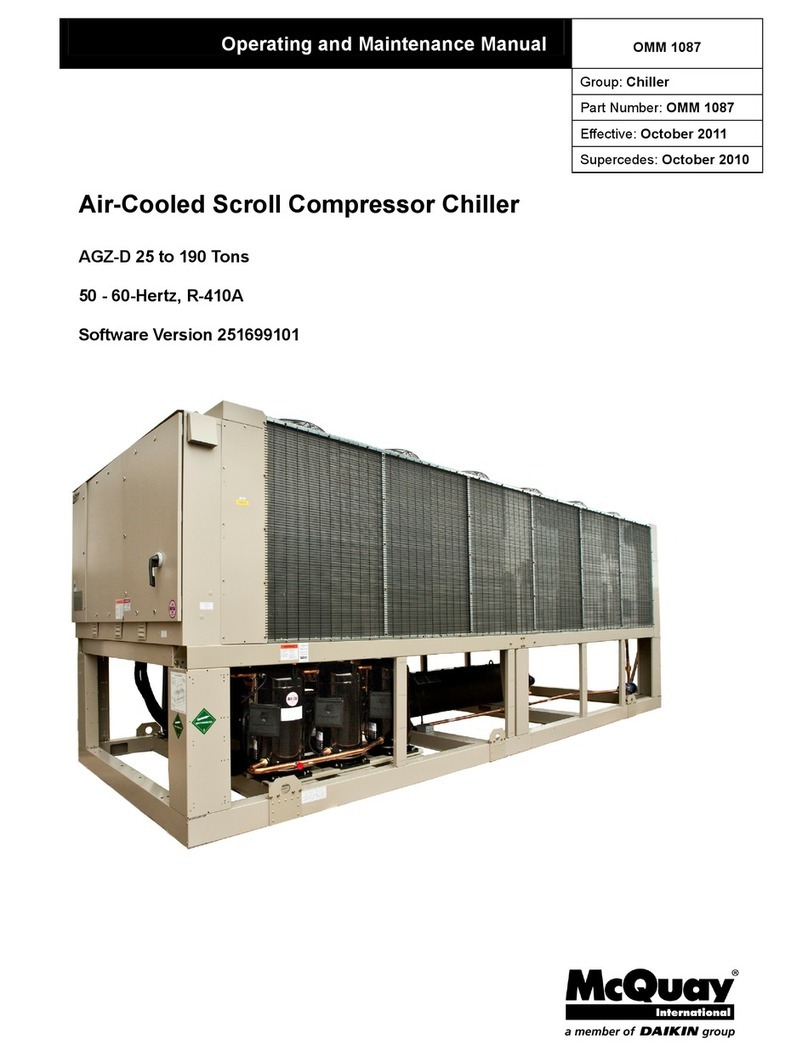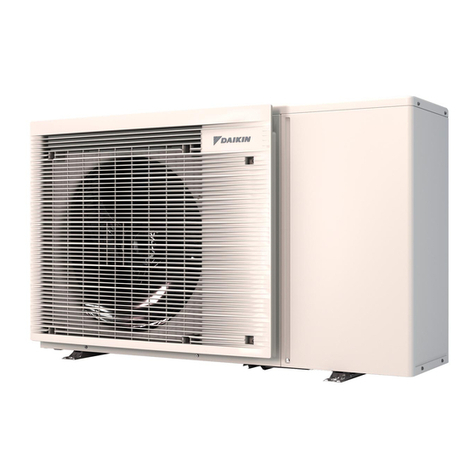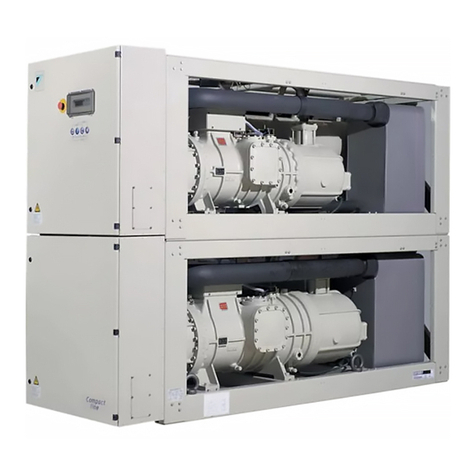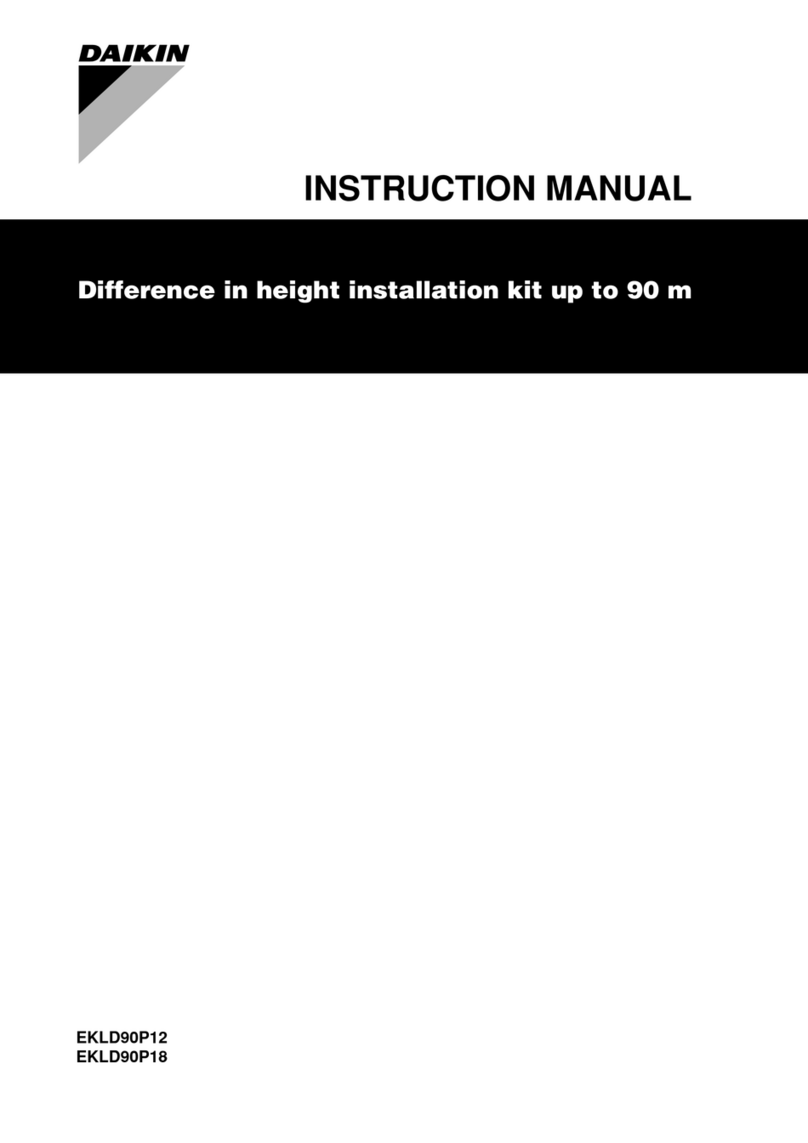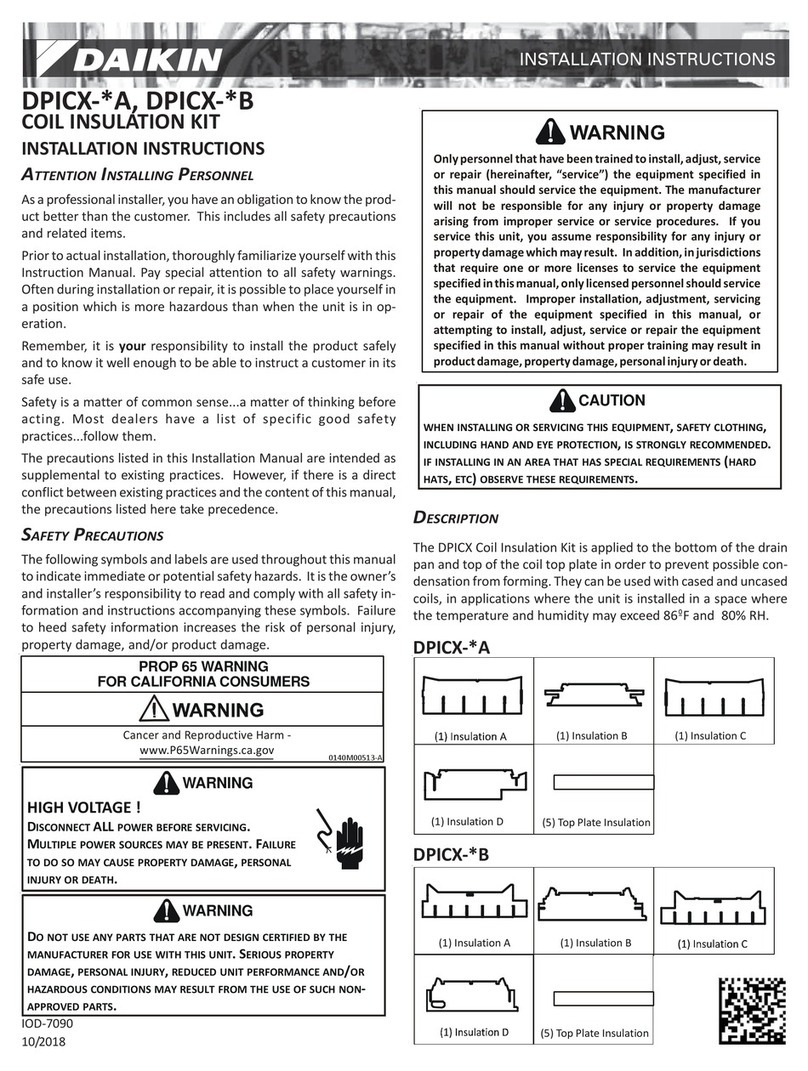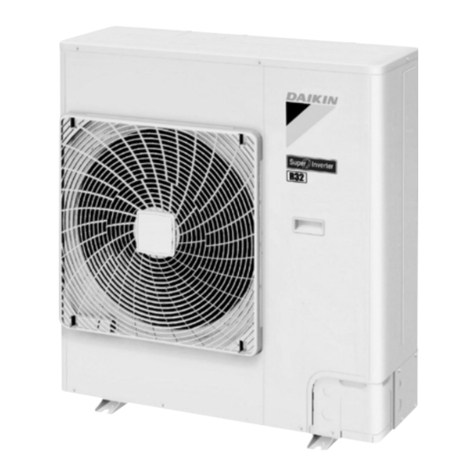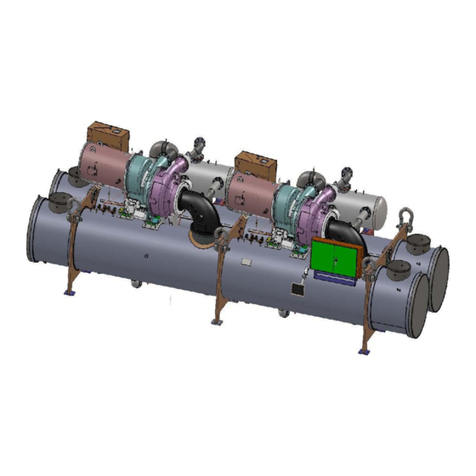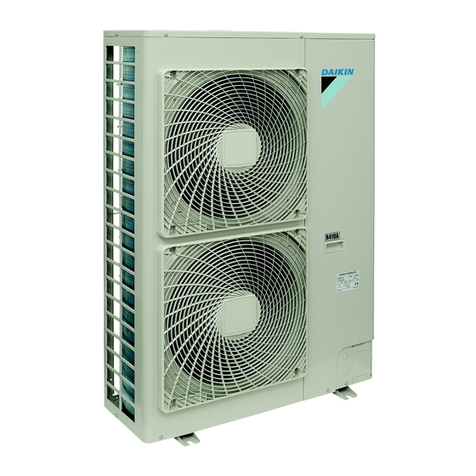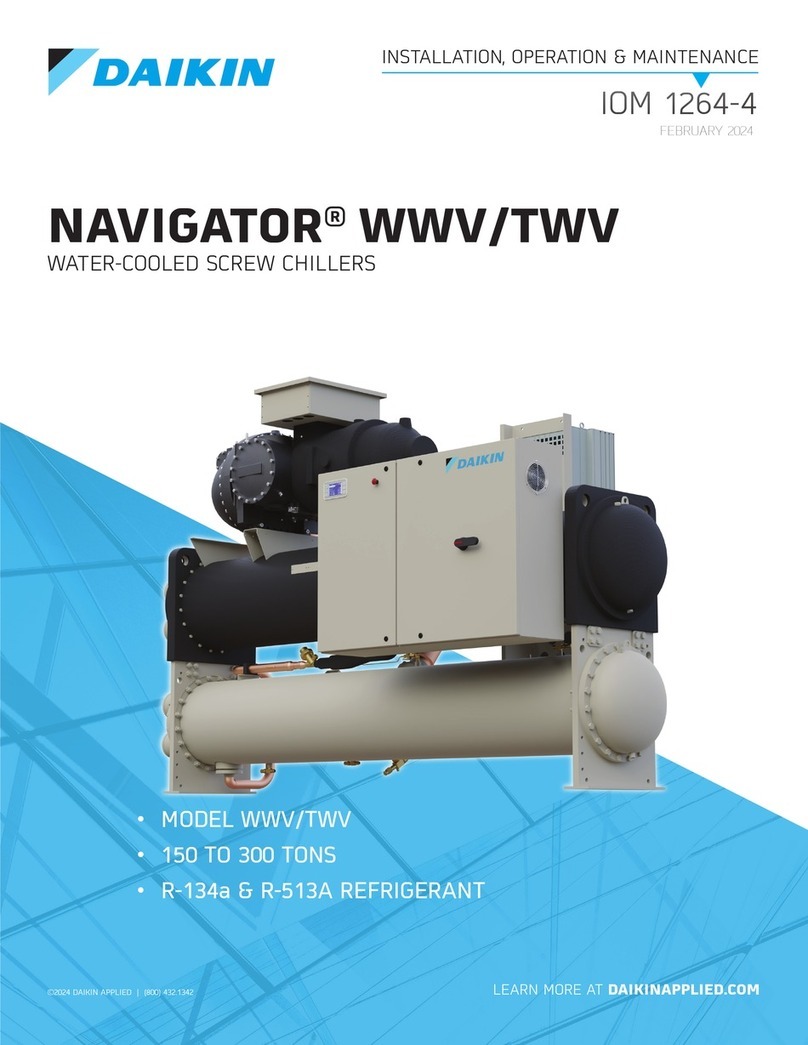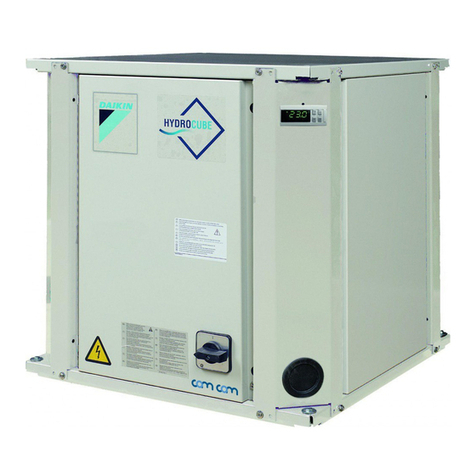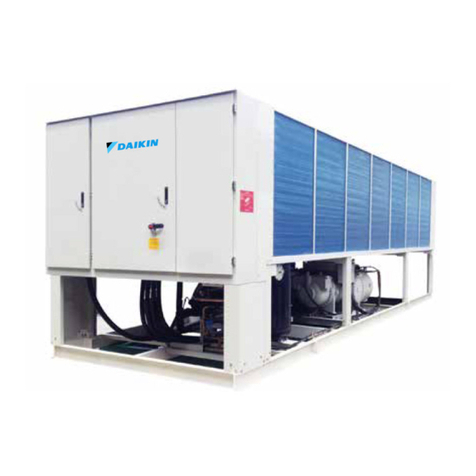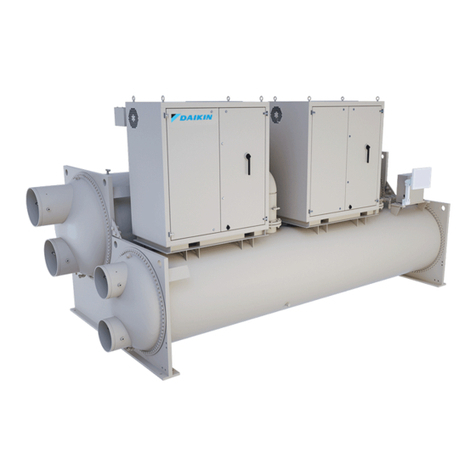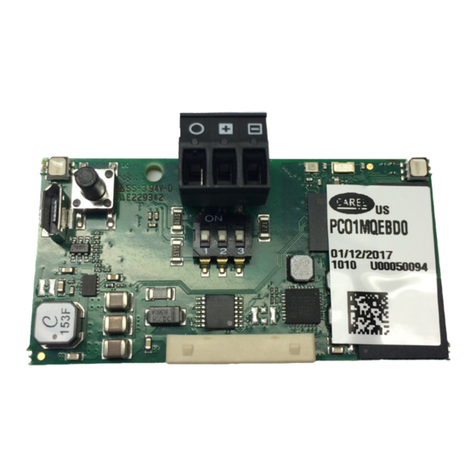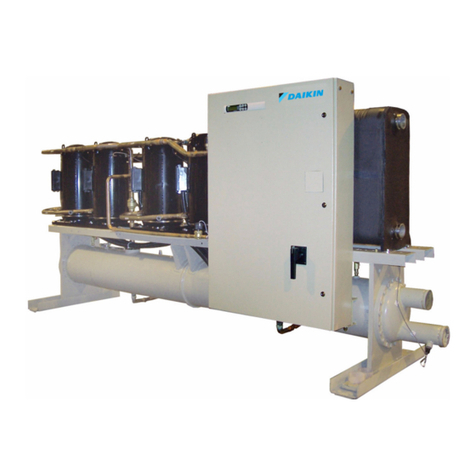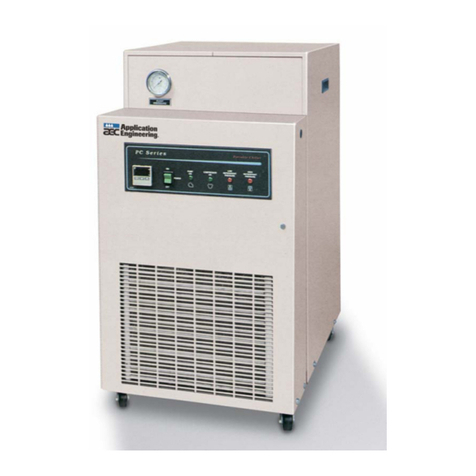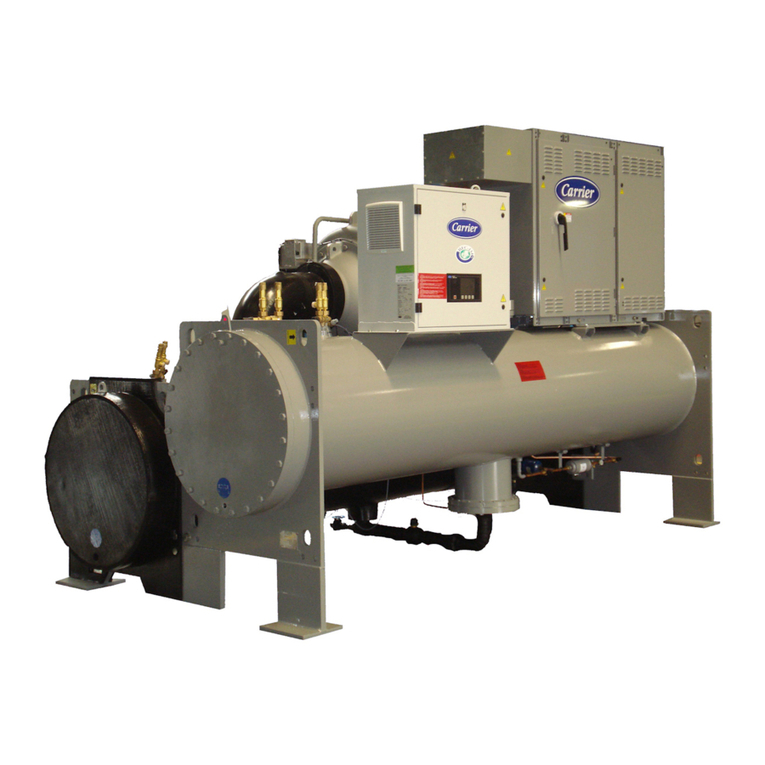
IOM 1206-7 • TRAILBLAZER™MODEL AGZ CHILLERS 4 www.DaikinApplied.com
InsTallaTIon and applICaTIon InformaTIon
Operating and Standby Limits
Table 1: Operating Limits
Maximum standby ambient temperature 131°F (55°C)
Maximum operating ambient temperature 105°F (41°C)
-with optional high ambient package (see information under High Ambient Operation) 125°F (52°C)
Minimum operating ambient temperature (standard control) 32°F (0°C)
Minimum operating ambient temperature (with optional low-ambient control) -10°F (-23°C)
Leaving chilled water temperature 40°F to 65°F (4°C to 18°C)
Leaving chilled uid temperatures (with anti-freeze) - Note that in cases of high ambient
temperature, the lowest leaving water temperature settings may be outside of the chiller
operating envelope; consult Daikin Tools to ensure chiller is capable of the required lift.
15°F to 65°F (-9°C to 18°C)
Operating chilled water delta-T range 6°F to 16°F (3.3°C to 8.9°C)
Maximum evaporator operating inlet uid temperature 81°F (27°C)
Maximum evaporator non-operating inlet uid temperature 100°F (38°C)
Unit Placement
Trailblazer™units are for outdoor applications and can be
mounted either on a roof or at ground level. For roof mounted
applications, install the unit on a steel channel or I-beam
frame to support the unit above the roof. For ground level
applications, install the unit on a substantial base that will not
settle. Use a one-piece concrete slab with footings extended
below the frost line. Be sure the foundation is level within 0.5”
(13 mm) over its length and width. The foundation must be
strong enough to support the unit weight - see “Dimensions
and Weights - Packaged Units” on page 20.
Service Clearance
Sides
• 30-70 Ton Models: Minimum of 4 feet (1.2 meters)
• 75-240 Ton Models: It is highly recommended to
provide a minimum of 8 feet (2.4 meters) on one side to
allow for coil replacement. Coils can be removed from
the top, allowing a minimum of 4 feet (1.2 meters) of
side clearance; however, the unit performance may be
derated.
Control Panel End
• All Models: Minimum of 4 feet (1.2 meters)
Opposite Control Panel End
• 30-70 Ton Models with Microchannel Coils: Minimum
of 7.5 feet (2.3 meters)
• 75-180 Ton Models: Minimum of 4 feet (1.2 meters)
• 190-240 Ton Models: Minimum of 8 feet (2.4 meters) for
evaporator removal
Figure 3: Service Clearance
Spacing Requirements
Sufcient clearance must be maintained between the unit
and adjacent walls or other units to allow the required unit air
ow to reach the coils. Failure to do so will result in a capacity
reduction and an increase in power consumption. No solid
obstructions are allowed above the unit at any height, see page
7for details.
Graphs on the following pages give the minimum clearance
for different types of installations and also capacity reduction
and power increase if closer spacing is used. The clearance
requirements shown are a general guideline and cannot
account for all scenarios. Such factors as prevailing winds,
additional equipment within the space, design outdoor air
temperature, and numerous other factors may require more
clearance than what is shown.
Minimum = 4 ft (1.2 m)
Minimum = 4 ft (1.2 m)
Minimum = 4 ft
(1.2 m)
Minimum = 7.5 ft (2.3 m)
for models 030-070
with Microchannel Coils
Control Panel
Minimum = 4 ft (1.2 m)
for models 075-180
075-240 Ton Models: 8ft (2.4 m) recommended on one side
Minimum = 8 ft (2.4 m)
for models 190-240
